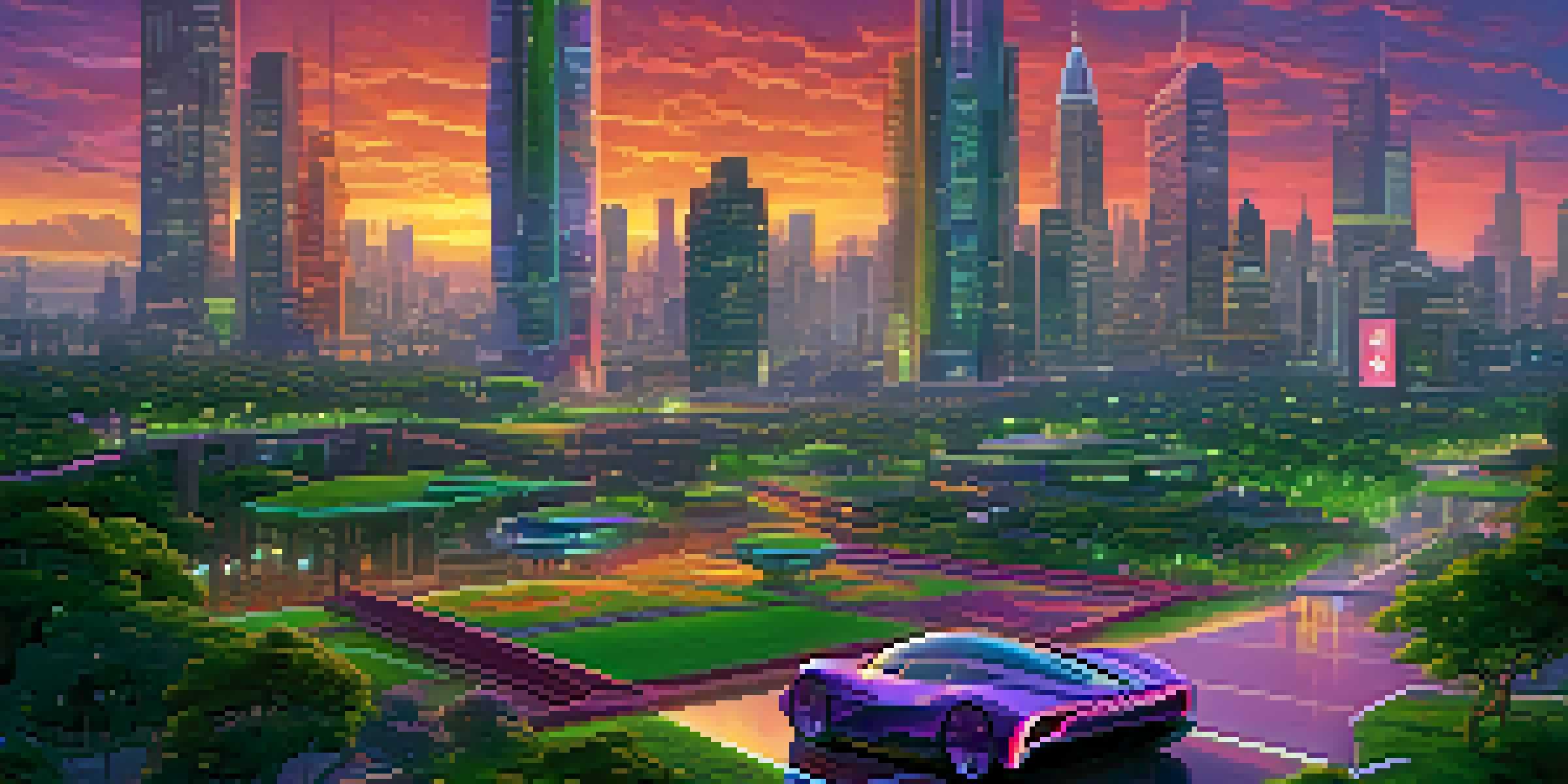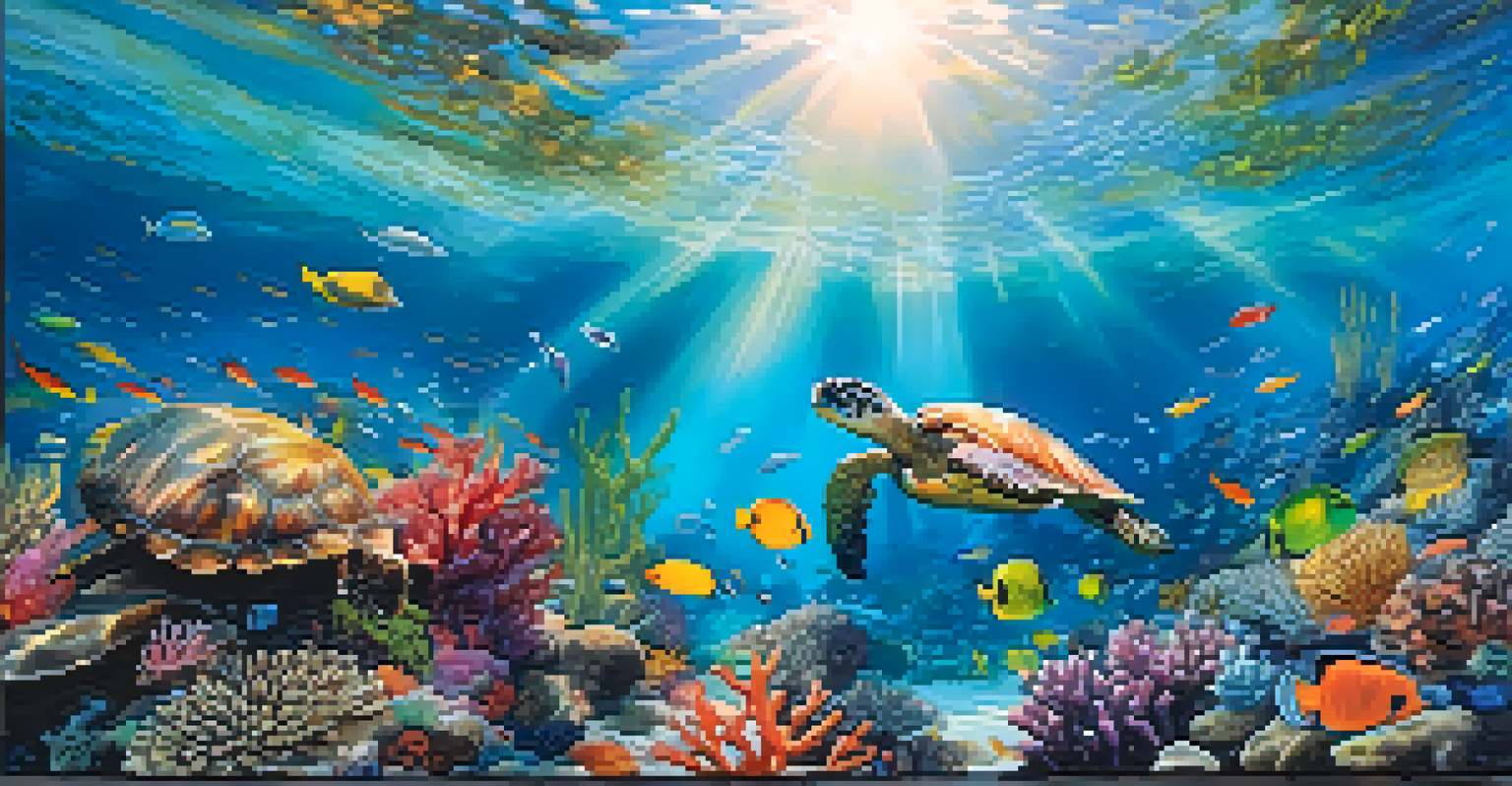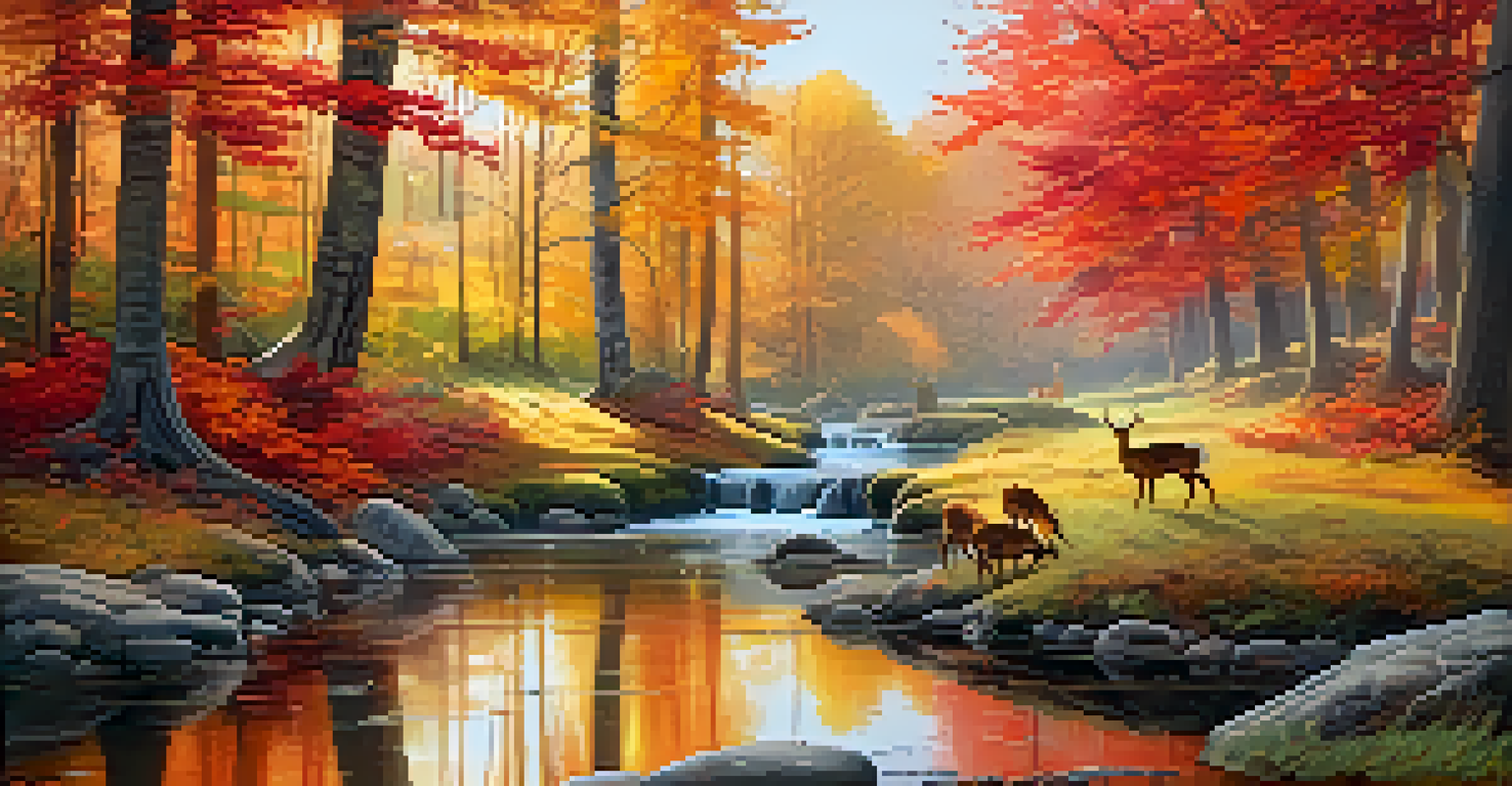How CGI Revolutionized Visual Effects in Modern Filmmaking

The Birth of CGI: A New Era in Filmmaking
Computer-generated imagery, or CGI, emerged in the late 20th century, marking a significant shift in visual storytelling. Unlike traditional methods that relied heavily on practical effects and models, CGI allowed filmmakers to create fantastical worlds and characters that were previously unimaginable. This technology first gained traction in movies like 'Tron' (1982) and 'Jurassic Park' (1993), setting the stage for an explosion of creativity in cinema.
CGI is a tool that brings life to our imagination, allowing us to tell stories that were once impossible to visualize.
The ability to generate lifelike images on screen opened up new avenues for filmmakers, enabling them to push the boundaries of imagination. It allowed for a seamless blend of real and digital elements, captivating audiences in ways that practical effects alone could not. As CGI technology evolved, so did the complexity and detail of visual effects, making it an indispensable tool in modern filmmaking.
As CGI became more accessible, it democratized the filmmaking process, allowing independent filmmakers to create stunning visuals without the hefty budgets of big studios. Today, we see CGI everywhere, from blockbuster hits to smaller indie films, proving that this technology has truly revolutionized the industry.
Enhancing Storytelling Through Visual Effects
One of the most significant impacts of CGI is its ability to enhance storytelling. Filmmakers can now visualize complex narratives that would be challenging to portray with traditional techniques. For instance, in 'Avatar' (2009), James Cameron utilized CGI to create an entirely new world, immersing viewers in the lush landscapes of Pandora, which became integral to the film's success.

CGI allows for emotional depth and visual metaphors that resonate with audiences. Consider the use of CGI in 'The Lord of the Rings' series, where the digital creation of Gollum not only brought a unique character to life but also represented themes of obsession and duality. Such storytelling devices enrich the viewer's experience, making the narrative more impactful.
CGI Revolutionizes Filmmaking
CGI has transformed visual storytelling, allowing filmmakers to create imaginative worlds and characters that were previously impossible.
Moreover, the freedom that CGI provides filmmakers means they can explore themes and genres that were once difficult to tackle. This has led to a resurgence in genres like fantasy and sci-fi, where the limits of reality are stretched, and imagination reigns supreme.
The Fusion of CGI and Practical Effects
While CGI has taken center stage, it’s essential to recognize the value of practical effects. Many filmmakers today embrace a hybrid approach, combining CGI with traditional techniques to create a more authentic experience. For example, in 'Mad Max: Fury Road' (2015), the use of real stunts and explosives, paired with CGI enhancements, resulted in breathtaking action sequences that felt both visceral and larger than life.
The beauty of CGI is that it allows filmmakers to create worlds beyond our wildest dreams, merging the real with the fantastical.
This fusion allows filmmakers to maintain a sense of realism while still tapping into the limitless possibilities of digital effects. By grounding CGI in practical effects, creators can achieve a balance that resonates with audiences, making the fantastical feel tangible. This approach not only elevates visual storytelling but also honors the craftsmanship of practical effects artists.
In essence, the collaboration between CGI and practical effects celebrates the artistry of filmmaking, ensuring that the audience remains engaged and immersed in the story. It’s a testament to how innovation can coexist with tradition, creating a richer cinematic experience.
The Role of CGI in Animation and Character Creation
CGI has revolutionized the world of animation, allowing for the creation of stunningly lifelike characters. In films like 'Toy Story' (1995) and 'Frozen' (2013), CGI brought animated characters to life in ways that traditional animation could not. The level of detail in expressions, movements, and environments has raised the bar for animated storytelling, creating emotional connections with audiences.
Moreover, CGI enables animators to explore a wide range of styles and aesthetics, pushing the boundaries of creativity. The flexibility of CGI allows for diverse character designs, from realistic humans to fantastical creatures, giving filmmakers the freedom to tell unique stories across various genres. This versatility has led to a flourishing animation industry, captivating both children and adults alike.
Balancing CGI and Practical Effects
The fusion of CGI with practical effects enhances realism and honors traditional filmmaking craftsmanship.
The evolution of CGI in animation also reflects advancements in technology, such as motion capture, which has further enhanced character realism. By merging live-action performance with animated characters, films like 'The Jungle Book' (2016) have demonstrated the potential of CGI to create immersive and emotionally resonant experiences.
CGI's Impact on Action and Adventure Films
Action and adventure films have particularly benefited from the emergence of CGI, transforming how thrilling sequences are crafted. With the ability to create explosive environments and complex stunts, CGI has redefined the genre, allowing filmmakers to push the limits of what can be depicted on screen. Movies like 'The Avengers' (2012) showcase epic battles and stunning visual effects that captivate audiences while maintaining a coherent narrative.
Additionally, CGI enables the creation of elaborate set pieces that would be impractical or impossible to film in real life. In 'Transformers' (2007), for instance, the intricate transformations of robotic characters were made possible through cutting-edge CGI, resulting in visual spectacles that left audiences in awe. These advancements contribute to the overall excitement and immersion of the viewing experience.
As CGI continues to advance, we can expect even more innovation in action and adventure films. The technology not only enhances visual storytelling but also inspires filmmakers to craft unique narratives that challenge traditional conventions.
The Challenges and Criticisms of CGI
Despite its many advantages, CGI is not without its challenges and criticisms. One major concern is the over-reliance on digital effects, which can lead to a lack of authenticity in storytelling. Some filmmakers have faced backlash for prioritizing visual spectacle over character development and plot, resulting in films that feel hollow despite their impressive visuals.
Moreover, the rapid evolution of CGI technology raises questions about the impact on traditional filmmaking crafts. As CGI becomes increasingly sophisticated, there is a risk that practical effects and the skills of special effects artists may be undervalued. Striking a balance between innovation and tradition is crucial to preserving the artistry of filmmaking.
Future Innovations in CGI
Emerging technologies like virtual reality and artificial intelligence promise to further elevate CGI's role in crafting immersive cinematic experiences.
Lastly, while CGI can create stunning visuals, it can also lead to a disconnect between the audience and the story. If viewers become too aware of the digital manipulation behind the scenes, they may struggle to engage fully with the narrative. This highlights the importance of using CGI thoughtfully and in service of the story, rather than as a crutch.
The Future of CGI in Filmmaking
As technology continues to advance, the future of CGI in filmmaking looks promising. Innovations like virtual reality (VR) and augmented reality (AR) are beginning to merge with traditional filmmaking techniques, offering exciting possibilities for immersive storytelling. Imagine experiencing a film where you can interact with characters and environments in real-time; this is the direction that filmmakers are heading toward.
Moreover, the rise of artificial intelligence (AI) is set to further enhance CGI capabilities. AI can assist in generating realistic animations and effects, streamlining the production process while maintaining high-quality visuals. This integration of AI into CGI workflows could lead to even more groundbreaking projects that push the limits of creativity.

Ultimately, the evolution of CGI will continue to shape the landscape of filmmaking, providing new tools for storytellers to explore. As filmmakers embrace these advancements, we can expect a future filled with innovative narratives and breathtaking visuals that redefine the cinematic experience.